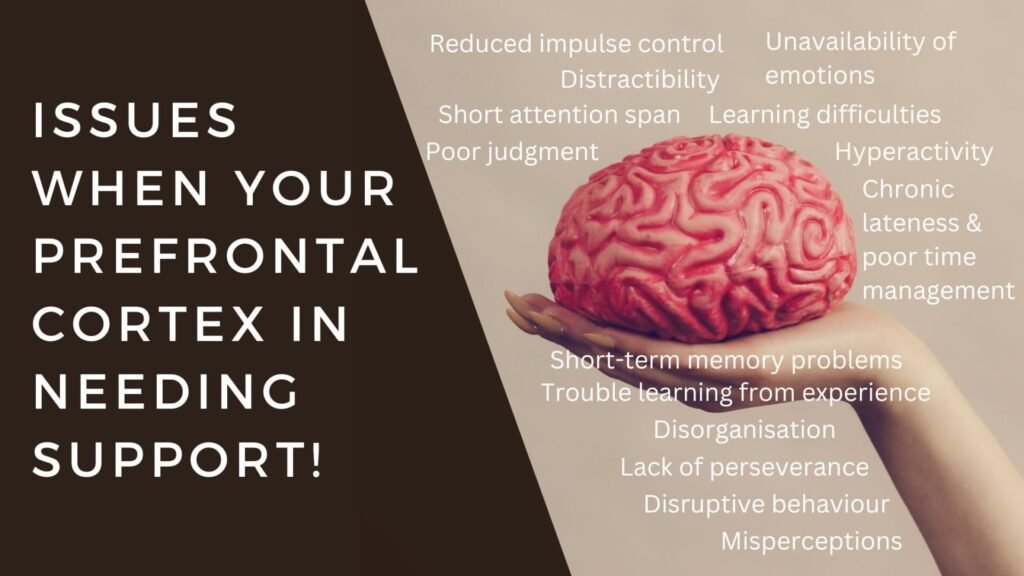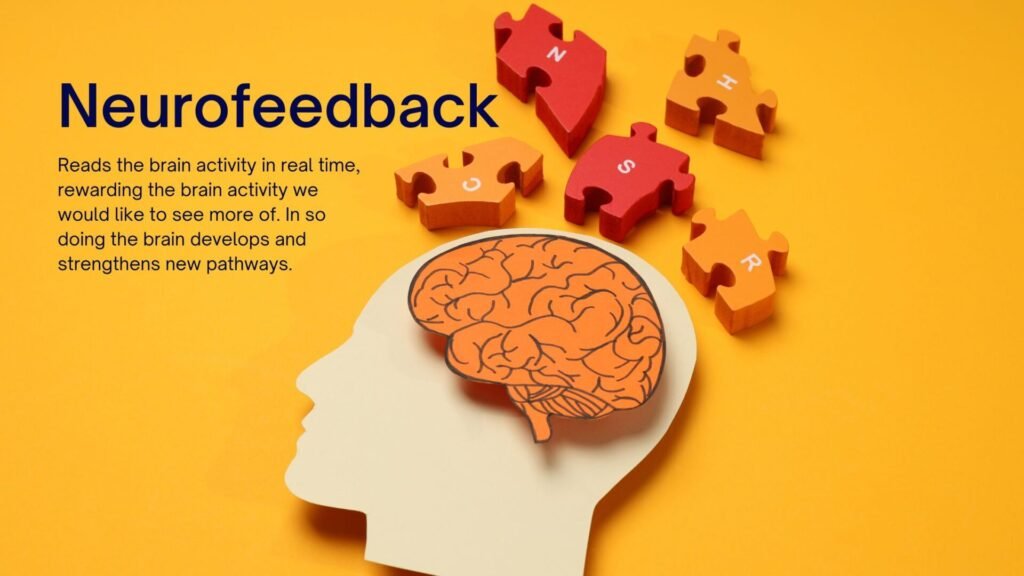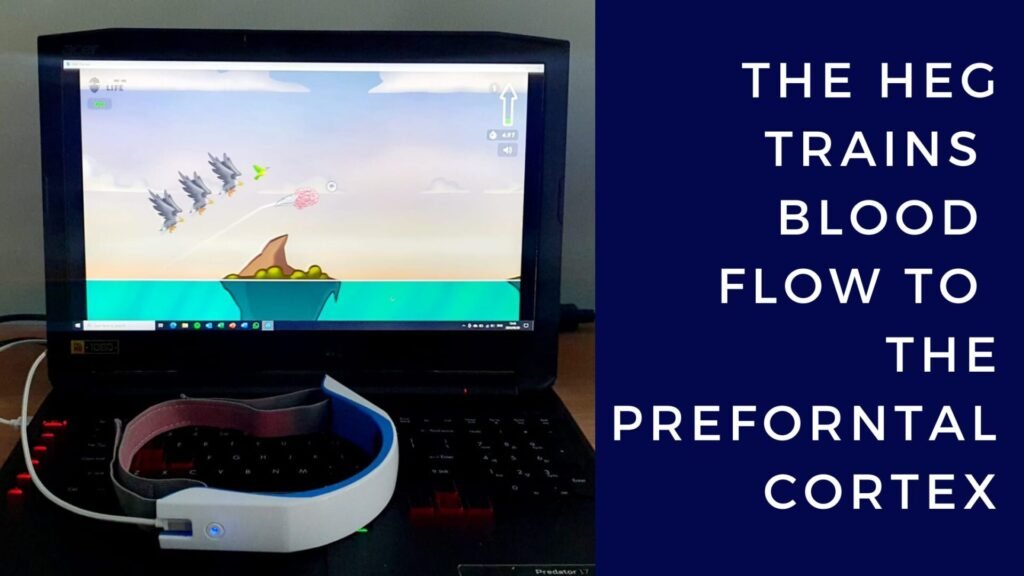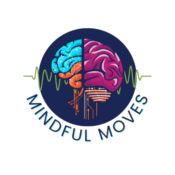
Have you met your brain?
Dr. Daniel Amen, a renowned psychiatrist and brain disorder specialist, has a famous saying: “You don’t know unless you look.” He raises an intriguing question about why psychologists and psychiatrists are the only professionals who don’t physically examine the organ they treat. To bridge this gap, Dr. Amen utilises SPECT (single photon emission computed tomography) scans to map out brain activity in his patients. These scans reveal areas of low brain activity as noticeable ‘holes’. At Dr. Amen’s Clinics, neurofeedback therapy is employed to enhance mental health symptoms, improve performance, and restore balance to brain activity. This groundbreaking therapy holds immense potential and could be the answer many parents have been desperately searching for online.
- Attention-Deficit/Hyperactivity Disorder (ADHD),
- Oppositional Defiant Disorder (ODD),
- Autism Spectrum Disorder (ASD),
- Anxiety disorders,
- Behavioral problems in school,
- Sleep issues,
- Aggression,
- Tantrums,
- Learning disabilities, and
- Academic challenges.
Dr. Robert Melillo, a trailblazer in the realm of transforming lives, recently shared on Instagram about neurofeedback, also known as E.E.G. He emphasized the significance of this cutting-edge technique in enhancing various aspects of our well-being, such as mood, attention, self-regulation, sleep, energy, stress, anxiety, and more. Take advantage of neurofeedback to optimize your brain’s potential!
What does the prefrontal cortex do?
The brain consists of four distinct lobes, namely the frontal lobe, temporal lobes, parietal lobe, and occiput lobe. Each of these lobes serves different functions as sensory information enters the brain, gets compared to our prior knowledge and experiences, and then proceeds for further processing and eliciting a response. A major player in this process is our prefrontal cortex, which plays a pivotal role in the following aspects:
- Focus
- Forethought
- Judgement
- Impulse control
- Organisation
- Planning
- Problem-solving
- Learning from past experiences
- Has the ability to feel and express emotions
- And helps with empathy.
It’s quite ironic that the prefrontal cortex takes its sweet time to fully mature, typically around the age of twenty-four, unless someone has hindered its growth with medications, drugs, or other harmful substances. Dr. Carla Hannaford further sheds light on how individuals who are constantly anxious may have fewer neural connections in this particular region.
” Stress necessitates an overemphasis on survival-oriented brain processing at the expense of rational, limbic and cortical functioning, especially within the frontal lobes. Consequently, stressed out, survival-oriented humans have less opportunity to develop nerve nets into the frontal lobe and may exhibit learning difficulties as a result.”
Carla Hannaford Ph.D. Smart Moves. Why learning is not all in your head.

What issues do we see in a person with imbalances in the prefrontal cortex?
If there are imbalances within the prefrontal cortex, you might observe a range of behaviours and challenges in an individual. Such as,
- Short attention span
- Distractibility
- Learning difficulties
- Lack of perseverance
- Disruptive behaviour
- Reduced impulse control
- Hyperactivity
- Chronic lateness and poor time management
- Disorganisation
- Procrastination
- Unavailability of emotions
- Misperceptions
- Poor judgment
- Trouble learning from experience
- Short-term memory problems
- Inability to control their behaviour
- Anti-social behaviour
- Insensitivity to the needs and feelings of others
Dr. Amen explains in his book, “Change your Brain, Change your Life,” that ADHD and other attention issues can stem from a neurological dysfunction in the prefrontal cortex. Instead of brain activity increasing when focusing on a task, it tends to decrease as individuals with ADHD struggle to concentrate. Those with ADHD may exhibit various symptoms such as short attention spans, impulsivity, disorganization, starting multiple projects but finishing few, and being prone to negative thinking. Surprisingly, seeking conflict can also be a symptom, as some individuals use it as a way to stimulate the prefrontal cortex. It’s important to note that these behaviors and challenges are not exclusive to those diagnosed with ADHD. In fact, you may find that you too are experiencing similar challenges.
What do certain brain patterns reveal?
Considering the points mentioned above, it is crucial not to overlook the other lobes and patterns that may contribute to the issues one is experiencing. It is important to understand that dissecting something without considering the bigger picture may provide only a partial understanding. In addition to that, there are various brainwaves and patterns that can also play a role in the symptoms mentioned earlier.
One possible scenario is when an individual has an abundance of slow brain waves. This can result in a person who is imaginative, creative, and intuitive, often thinking in pictures and spending a significant amount of time daydreaming. However, they may struggle to extend their attention to their surroundings and get lost in their own thoughts. Excessive theta brain waves can also lead to feelings of anxiety.
Furthermore, the location of these slower brain waves can impact concentration, motivation, organization, and more. In some cases, faster brain waves may be found at the back of the head instead of the front. This can lead to a constantly active mind that struggles to switch off, making it difficult to fall asleep.
Insufficient medium brain waves can affect our ability to self-regulate and self-soothe, as well as disrupt the connection between the mind and body. Many individuals with ADHD are often criticised for constantly needing to move in order to focus, but it is the lack of these medium brain waves that result in such behaviour. These waves also help filter out irrelevant stimuli, allowing us to focus on what is important. With less of these, even the slightest sound or movement becomes a distraction, demanding attention and adding to the processing load. This can further exacerbate the issues at hand.
Ideally, slower brain waves should be synchronised in the brain, while faster ones should be localised in specific areas for specific functions. When the slower brain waves are not synchronised, individuals may struggle to relax between tasks.
When examining the brain activity of individuals, we may uncover additional patterns that could suggest various difficulties. These challenges could range from struggles with reading and writing, difficulties in receptive hearing, problems with spatial awareness and mathematics, to feelings of sadness, lack of motivation, or even internal happiness. The brain holds many secrets waiting to be unraveled!
It is important to consider all these factors when addressing the symptoms and issues one may be facing. By understanding the various brainwaves and patterns at play, we can develop a more comprehensive approach to finding solutions.

How does neurofeedback correct these?
After successfully mapping the activity in various regions of the brain, we can create specific protocols that will be implemented during ‘Brain Training’ sessions. During these sessions, electrodes will be placed on the individual’s head to monitor their brain activity in real-time. The program will then provide the client’s brain with feedback, reinforcing the desired responses. As the brain thrives on rewards, it will naturally strive to repeat these responses, gradually forming and reinforcing new neural pathways. Consequently, the outdated and unnecessary pathways will be replaced by stronger and more efficient ones over time.
Although this method is effective for the majority of the brain, it falls short when it comes to the prefrontal cortex. The reason behind this limitation is that the computer is unable to differentiate between brain activity and eye movements. Therefore, the question arises: how can we effectively train this crucial part of the brain in conjunction with the others?
How can we train the prefrontal cortex if we can’t use neurofeedback?
To enhance the prefrontal cortex, we can opt for HEG instead of neurofeedback or EEG. EEG, short for electroencephalography, gauges the brain’s electrical activity. While the rest of the brain functions as the engine and transmission, the prefrontal cortex serves as our steering and brakes. To strengthen this vital area, we focus on increasing the blood and oxygen flow, which directly impacts its activity. Hence, HEG, or hemoencephalography, comes into play.
In the late twentieth century, Hershel Toomin and Robert Marsh developed HEG, a technology that utilises near infrared to address attention issues. By placing a red LED and infrared LED on the forehead, the light passes through the skull and meninges to reach the brain’s surface. The HEG measures the amount of oxygenated blood flowing towards the prefrontal cortex by analysing the reflection of the light. It is crucial to consider the individual’s needs when training this brain region.
Why Mindful Moves uses the State Changer?
The Brain-Trainer method involves utilizing the innovative State Changer. Paired with the headband worn on the forehead, there are interactive games available for users to engage in while the system trains both closed and open focus. Closed focus enables us to home in on specific details and concentrate deeply, whereas open focus helps us remain aware of our surroundings. Dr. Ian McGilchrist, a psychologist and author, highlighted in a recent interview the importance of mastering both types of focus, drawing a parallel to how even a bird must focus on a seed or worm, while staying alert for potential threats.
The State Changer helps develop the left, right, and central prefrontal cortex to enhance its capacity for open and closed focus. This technique is a key component of comprehensive brain training, aiming to optimise individual performance. Initially, clients can start by training each area for three minutes every other day. As they progress, they can gradually increase the duration and decrease the frequency of these training sessions. Throughout the process, the HEG device assists in boosting the blood flow to the neurons, enabling faster firing.
The State Changer can help improve the density of capillary beds in the brain, potentially leading to fewer migraines after periods of stress.

When to get in touch?
Maybe you’re wondering about this after recognizing some of the struggles in yourself or your loved ones. Dr. Amen puts it simply, “How do you know unless you look?”. When it comes to scanning technologies, EEG/neurofeedback stands out as an affordable option to uncover the brain patterns that may be influencing your difficulties and behaviours. Reach out to us and you’ll be pleasantly surprised by our prices compared to others who map out your and your children’s problems. Our goal is not just to identify your challenges, but to actually work towards resolving them, unlike other methods that simply suggest more costly solutions. We analyse your brain activity not just to pinpoint issues but to help you improve them!
Have you considered HEG at your school?
Looking to enhance your students’ learning experience? Our portable HEG and Neurofeedback equipment can be easily transported to your school, providing a unique opportunity for your learners. Just like schools offer occupational therapy or speech sessions, we can offer neurofeedback and HEG sessions right at your doorstep. If you’re interested in learning more, feel free to reach out and let’s have a chat!
How is Mindful Moves different?
At Mindful Moves, we pride ourselves on taking a different approach when working with our clients. By combining EEG and HEG State Changers, we aim to integrate retained primitive reflexes that may be hindering the brain’s processing of information. Additionally, we use balances to help shift limiting beliefs that are reinforcing inefficient pathways. This unique method truly separates us from others in our line of work! Our focus is on collaborating with our clients, rather than simply working on them. As facilitators, we provide the expertise and tools necessary for you to become the best version of yourself.
Other things we do along with HEG.
Because we understand that a person is more than the sum of their parts, we treat the client as a whole. Profile sessions allow us to understand what else may be causing unnecessary challenges in a person’s life. Many clients will benefit from a movement programme along with HEG or even attending balance sessions to work on limiting beliefs. Each client is different and while people will benefit from doing any of the sessions we offer, when we are able to tailor a programme to suit your needs, we see true improvement. To find out more about the other services we offer, please head over to our website!
www.mindfulmoves.co.za
Contact us for more information!
If you are interested in any of our services, or the opportunity for us to offer our services at your school, please feel free to contact us.
info@mindfulmoves.co.za

